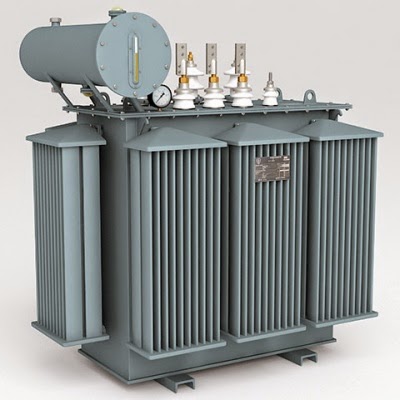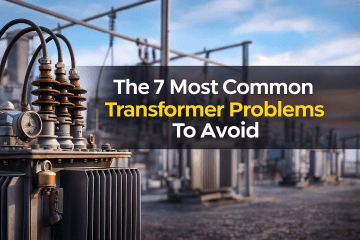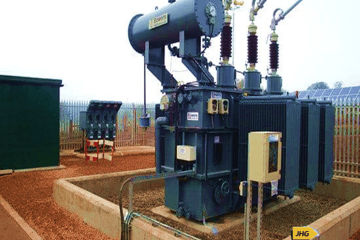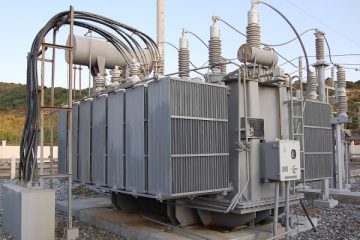Electrical transformers, the unsung heroes of modern electrical engineering, quietly enable the seamless flow of power that drives our homes, industries, and technologies. These devices, while often overlooked, are crucial in ensuring that electricity flows smoothly from power stations to our households, industries, and gadgets. But what does that really mean, and how do they perform this seemingly magical task? At Just HardRich Global Resources Limited, Nigeria’s choicest Electrical Power and Control Engineering Company, we aim to demystify these fascinating devices and make their complex processes accessible to everyone.
Understanding Electricity Basics
Before delving into the intricacies of electrical transformers, it’s essential to establish a foundation in the fundamental principles of electricity. Understanding voltage, current, and resistance is crucial as these concepts form the basis for comprehending why voltage transformation is a necessity in electrical systems.
Voltage (V): Often measured in volts (V), voltage represents the electrical potential or force that drives electric current through a circuit. Think of it as the pressure that propels electrons along a conductor, similar to water pressure in a plumbing system. Voltage is the energy per unit charge and determines the intensity of electrical flow.
Current (I): Measured in amperes (A), current is the rate of flow of electric charge through a conductor. It represents the movement of electrons and is akin to the flow of water in a river. In a closed circuit, current is a continuous flow of charged particles (usually electrons) from a higher voltage point to a lower voltage point.
Resistance (R): Measured in ohms (Ω), resistance is the property of a material that opposes the flow of electric current. It acts as an obstruction to the flow of electrons and can be thought of as the constriction of a water pipe, limiting the flow of water. Conductors, such as copper or aluminum wires, have low resistance and allow current to flow easily, while insulators, like rubber or plastic, have high resistance and prevent the flow of current.
Principles of Electromagnetic Induction
Electromagnetic induction is the process by which a changing magnetic field induces an electric current in a conductor. This phenomenon, discovered by Michael Faraday in 1831, is the basis of many electrical devices, including transformers, generators, and motors.
In a transformer, the core (often made of iron) creates a strong, constant magnetic field within it. When an alternating current (AC) flows through the primary winding, it generates a constantly changing magnetic field. This changing magnetic field induces an alternating voltage in another set of windings, which is the core principle of transformer operation.
Components of a Transformer
Transformers work due to three fundamental components: a core, typically constructed from ferromagnetic materials like iron, and two distinct sets of wire coils known as the primary and secondary windings.
Core: The core, usually made from laminated sheets of iron, serves to guide the magnetic field between the primary and secondary coils, ensuring minimal energy loss. The use of laminated sheets helps reduce energy dissipation as heat due to eddy currents.
Primary Winding: When an alternating current (AC) flows through the primary winding, it generates a pulsating magnetic field. This magnetic field is crucial as it is responsible for inducing a voltage in the secondary winding.
Secondary Winding: As the magnetic field reaches the secondary coil, it induces an electromotive force (EMF), compelling the electrons within the secondary winding to generate an electric current. The number of turns in the secondary winding relative to the primary winding determines whether the transformer steps up or steps down the voltage.
Types and Applications of Transformers
Transformers come in various types, each serving different purposes such as power distribution, isolation, signal processing, current sensing, and more. Understanding the specific applications of these transformers can help in choosing the right type for your needs.
Step-Up and Step-Down Transformers: These transformers adjust the voltage level between different stages of the electrical grid. Step-up transformers increase the voltage (more turns on the secondary coil), while step-down transformers decrease the voltage (more turns on the primary coil). These are widely used in power transmission and distribution systems.
Isolation Transformers: Used to electrically isolate one circuit from another, these transformers prevent electric shocks, noise interference, and ground loops. They are often found in medical equipment, sensitive electronics, and audio systems.
Voltage Regulation Transformers: These maintain a constant voltage level at the output load, regardless of input voltage fluctuations or load current changes. They are essential for industrial equipment, lighting systems, and computer networks.
Signal Processing Transformers: Used in communication systems, audio systems, and instrumentation, these transformers transmit or receive signals between different circuits or devices, amplifying, attenuating, filtering, or modulating signals as needed.
Measurement Transformers: These allow for the measurement of voltage or current levels in a circuit without direct connection, reducing high levels to safe levels readable by meters or instruments. They are crucial in power systems, protection systems, and testing systems.
Protection Transformers: These protect electrical devices or circuits from overvoltage, overcurrent, short circuits, or fault conditions. They isolate, limit, or interrupt fault current or voltage and are used in power systems and safety systems.
Transformer Efficiency and Losses
Transformer efficiency is a measure of how well a transformer converts electrical energy from one circuit to another. Ideally, a transformer should have no energy losses and be 100% efficient. However, in reality, transformers have some energy losses that reduce their efficiency.
Copper Losses: These losses are due to the resistance of the copper windings in the primary and secondary coils, causing heat generation and power dissipation. They depend on the current flowing through the windings and the resistance of the wire.
Core Losses: These losses occur due to the magnetic properties of the iron core, including hysteresis and eddy currents. Hysteresis is the lagging of magnetic domains behind the applied field, while eddy currents are circular currents induced in the core by the changing field. Both phenomena cause energy dissipation and heat generation.
Stray Losses: These losses arise from leakage of magnetic flux from the core or windings or parasitic currents in other parts of the transformer. They depend on the design and construction of the transformer and can be reduced by improving insulation, shielding, or grounding.
Benefits of Using the Right Transformer
Choosing the right transformer for specific applications can significantly impact the performance, quality, and safety of electrical systems and devices.
Voltage Regulation: Maintaining a constant voltage level improves power quality and efficiency, preventing damage or malfunction due to overvoltage or undervoltage. Voltage regulation transformers are often used in industrial equipment, lighting systems, and computer networks.
Electrical Isolation: Isolating one circuit from another prevents electric shocks, noise interference, and ground loops, essential in medical equipment, sensitive electronics, and audio systems.
Load Management: Distributing and balancing load current improves system reliability and stability, reducing power losses and overheating. Load management transformers are used in power systems, protection systems, and testing systems.
Efficiency: Reducing energy losses and increasing efficiency saves energy and costs while reducing environmental impact. The right transformer can achieve this by optimizing design, construction, and functionality.
Challenges and Maintenance of Transformers
Transformers face several challenges, including aging and deterioration, faults and failures, and efficiency losses. Regular maintenance is essential to overcome these challenges and ensure efficiency and longevity.
Aging and Deterioration: Over time, transformers experience aging and deterioration due to thermal, electrical, mechanical, environmental stress, or human error, affecting performance, reliability, and safety.
Faults and Failures: Transformers can encounter faults and failures due to overvoltage, overcurrent, short circuit, lightning, fire, water, oil leakage, or vandalism, leading to damage, malfunction, or explosion.
Losses and Inefficiency: Energy losses reduce transformer efficiency, increasing operating costs and environmental impact. Regular maintenance can help mitigate these losses.
Preventive Maintenance: Routine maintenance activities, such as inspecting, testing, cleaning, repairing, or replacing components, prevent or reduce faults and failures.
Corrective Maintenance: As-needed maintenance activities, such as troubleshooting, repairing, or replacing faulty parts, restore or improve transformer functionality after a fault or failure.
Conclusion
Transformers are versatile and essential devices that facilitate the efficient and safe transmission and distribution of electrical energy. By understanding their basic principles, types, applications, efficiency, benefits, challenges, and maintenance, you can make informed decisions about their use and maintenance. At Just HardRich Global Resources Limited, we provide top-notch Electrical Power and Control Engineering services to ensure that your transformers operate at peak efficiency and safety. Contact us today to learn more about how we can help you with all your electrical transformer needs.




